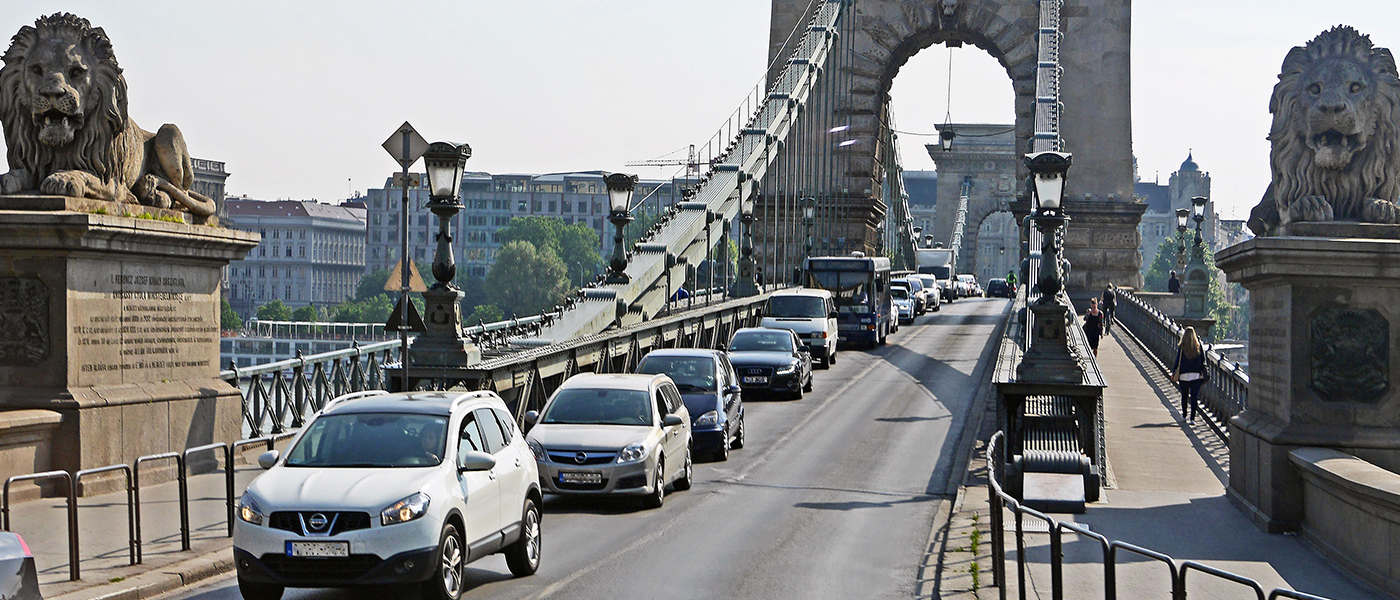From Seeing Red to Seeing Green
Each year, American drivers lose $160 billion, 7 billion hours, and countless cheery dispositions to traffic congestion. That averages out to $960 and 42 hours for every rush-hour commuter. Advocates for are hopeful that removing human drivers from the equation will help alleviate the problem, but some are concerned that a real impact won't be felt until the majority of cars on the road are self-driving. Now, a new study from the University of Illinois at Urbana-Champaign (U of I) suggests that might not be the case at all.
Some traffic jams have obvious causes — an accident, a motorcade, construction — but some seem to happen for no reason at all. These "phantom traffic jams" — caused by a single driver slowing down, setting off a chain reaction of slowing vehicles behind them — are the kind the researchers at U of I focused on in their study. They learned that injecting a single autonomous car into a group of 20 that were manned by human drivers could have a profound effect on the formation of phantom traffic jams.
"Our experiments show that with as few as 5 percent of vehicles being automated and carefully controlled, we can eliminate stop-and-go waves caused by human driving behavior," said Daniel B. Work, assistant professor at the University of Illinois at Urbana-Champaign and a lead researcher in the study, in a university news release.
During the experiment, the autonomous vehicle controlled its braking in a way that reduced the number of times a human driver behind it had to hit their brakes: from nine to a maximum of 2.5 times for every kilometer (.62 miles) driven. The total fuel consumed by the vehicles was also reduced by up to 40 percent.
Beyond the Traffic
According to the research team, not only do we not have to wait until all the cars on the road are autonomous to feel the impact they can have on our transportation system — we don't even need to wait for any to be fully autonomous. Some technology that's currently available can automatically adjust speed to maintain a safe distance from other vehicles — which can have a major impact on safety.
"Fully autonomous vehicles in common traffic may be still far away in the future due to many technological, market and policy constraints," explained researcher Benedetto Piccoli, the Joseph and Loretta Lopez Chair Professor of Mathematics at Rutgers University. "However, increased communication among vehicles and increased levels of autonomy in human-driven vehicles is in the near future."
While this is great news for anyone who loathes wasting time and money on their daily commute, the benefits of autonomous cars extend far beyond the fuel gauge. Each year, 32,000 lives are lost due to traffic accidents, and 94 percent of all accidents are attributed to driver error. Christopher A. Hart, chairman of the U.S. National Transportation Safety Board, has said he expects driverless cars will be able to "save many, if not most" of those lives.
With lives, time, money, and your good mood hanging in the balance, we truly don't have a minute to waste in our journey to get autonomous vehicles on the road.
Share This Article
